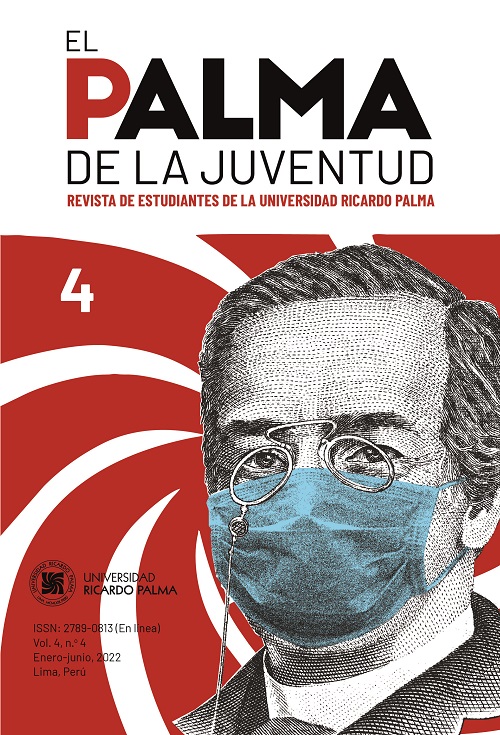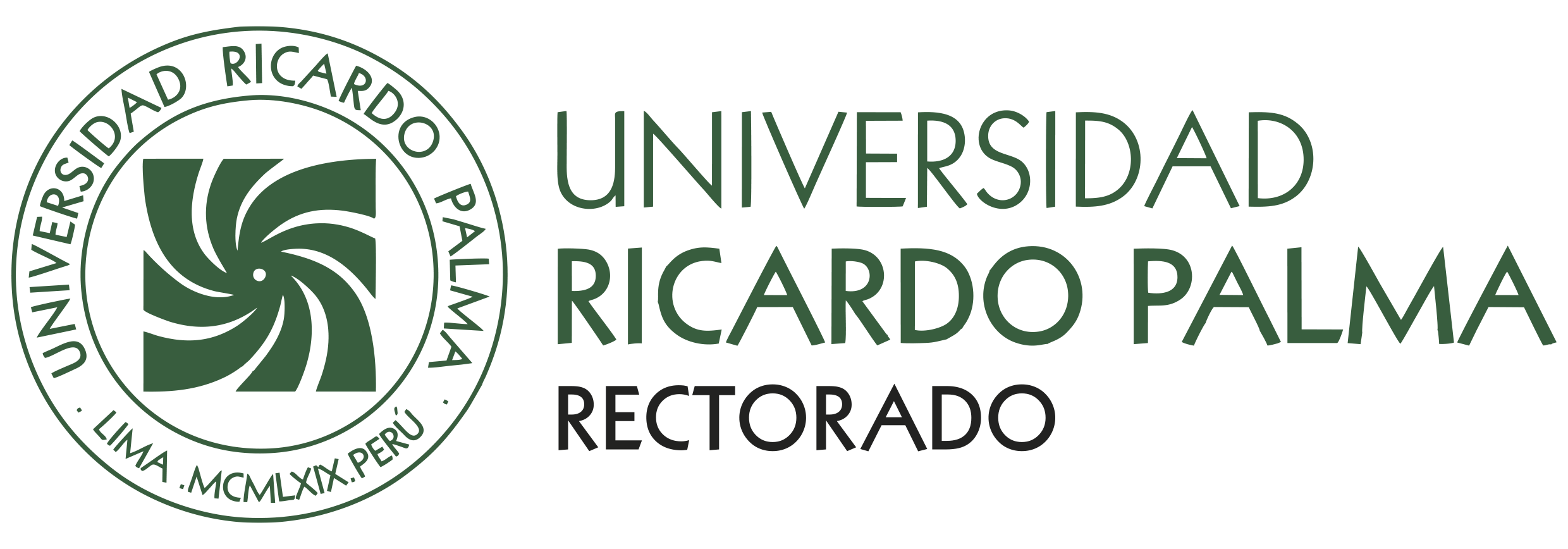The congenital abnormalities and malformations contained in Ricardo Palma’s «La astrología en el Perú»
DOI:
https://doi.org/10.31381/epdlj.v4i4.4884Keywords:
Tradiciones peruanas (Peruvian Traditions), congenital anomalies, congenital malformations, medical astrology, genetics, embryologyAbstract
This article will analyze the congenital anomalies and malformations that are evidenced in the story «La astrología en el Perú», where the illustrious Don Ricardo Palma describes the explanations for the deformities with which newborns were born in the 17th century, which were based on the mothers, ignorance of astrology. This work aims to explain these alterations scientifically, based on three branches of medicine: genetics, embryology, and neonatology. In addition, it seeks to inform about the diagnoses that medical astrology used to use based on superstitions, in comparison with contemporary medicine that opts for specialized research to detect the conditions that the fetus could suffer from its intrauterine development.
References
Andina (2021, 6 de enero). EsSalud: Fototerapia salva la vida a reciénnacidos con exceso de bilirrubina en la sangre. https://www.andina.pe/agencia/noticia-essalud-fototerapia-salva-vida-a-recien-nacidos-exceso-bilirrubina-sangre-828843.aspx
Ayala, F. D., Guevara, E., Carranza, C., Luna, A., Espinola, M., Racchumí, A., Mejico, M., Morales, S., Valdivieso, V., Reyes, B. N., Barbaggelata, A. J. y Moreno, K. F. (2019). Factores asociados a malformaciones congénitas. Revista Peruana de Investigación Materno Perinatal, 8(4), 30-40. https://investigacionmaternoperinatal.inmp.gob.pe/index.php/rpinmp/factores-asociados-malformaciones
Carreras, E., Maroto, A., Arévalo, S., Rodó, C., Galo, C., Ruiz, C., Manrique, S., Cuxart, A. y Peiró, J. L. (2012). Tratamiento prenatal del mielomeningocele. Diagnóstico Prenatal, 23(4), 148-153. https://www.elsevier.es/es-revista-diagnostico-prenatal-327-pdfS2173412712000650
Dysart, K. C. (2018). Hiperbilirrubinemia neonatal (ictericia en recién nacidos). Manual MSD. https://www.msdmanuals.com/es-pe/professional/pediatr%C3%ADa/trastornos-metab%C3%B3licos-electrol%C3%ADticos-y-t%C3%B3xicos-en-reci%C3%A9n-nacidos/hiperbilirrubinemia-neonatal
EsSalud (2021, 6 de enero). EsSalud: Moderna fototerapia salva la vida a recién nacidos con exceso de bilirrubina en la sangre. http://noticias.essalud.gob.pe/?inno-noticia=essalud-moderna-fototerapia-salvala-vida-a-recien-nacidos-con-exceso-de-bilirrubina-en-la-sangre#carouselExampleIndicators
Estadella, J. (2021). Introducción a la astrología médica. Kier. https://books.google.es/books?id=n6YWEAAAQBAJ&printsec=frontcover&hl=es&source=gbs_ge_summary_r&cad=0#v=onepage&q&f=false
Guillén, E., Ballesta, M. J. y López, V. (2011). Genética y enfermedad. Concepto de genética médica. Revista Nefrología, 2(1). https://www.revistanefrologia.com/es-genetica-enfermedad-conceptogenetica-medica-articulo-X2013757511002585
Guiñez, R. (2015). Espina bífida, prevención, diagnóstico y manejo prenatal. Revista Pediatría Electrónica, 12(1), 12-19. http://www.revistapediatria.cl/volumenes/2015/vol12num1/pdf/ESPINA_BIFIDA.pdf
Gutiérrez, J. A., Angulo, E., García, H. A., García, E., Padilla, H., Rulfo, D., Plascencia, A., Vargas, R., Yanoswsky, G. y Zepeda, L. C. (2019). Manual de neonatología. Universidad de Guadalajara. https://www.cucs.udg.mx/sites/default/files/libros/neonatalogia_2019_con_forros.pdf
Hospital Nacional Sergio E. Bernales (2020, 3 de noviembre). [Polidactilia múltiple postaxial tipo A] [imagen adjunta]. Facebook. https://www.facebook.com/HNSEB.Oficial/photos/pcb.2874805629457753/2874805229457793/
Kaempf, R., Ribak, S. e Irisarri, C. (2016). Polidactilias del pulgar. Tratamiento quirúrgico. Revista Iberoamericana de Cirugía de la Mano, 44(2), 118-130. https://reader.elsevier.com/reader/sd/pii/S1698839616300263?token=433AD0755524D5FC36311C2A5529E19BBD9633C538DBCBB327B260A13E2CB7EFCB78E22188C1AC8C75840AD4613FD7D4&originRegion=us-east-1&originCreation=20211221175319
Madrigal, C. (2014). Ictericia neonatal. Revista Médica de Costa Rica y Centroamérica, 71(613), 759-763. https://www.medigraphic.com/pdfs/revmedcoscen/rmc-2014/rmc145n.pdf
Ministerio de Salud (2020, 4 de noviembre). Hospital Nacional Sergio Bernales realizó exitosa cirugía a menor con 24 dedos en manos y pies. https://www.gob.pe/institucion/minsa/noticias/312356-hospitalnacional-sergio-bernales-realizo-exitosa-cirugia-a-menor-con24-dedos-en-manos-y-pies
Mutchinick, O. M., Arteaga, J. y Luna, L. (2019). Malformaciones congénitas. En V. del Castillo, R. D. Uranga y G. Zafra (eds.), Genética clínica (pp. 769- 782). El Manual Moderno.
Organización Mundial de la Salud (2022, 28 de febrero). Anomalías congénitas. https://www.who.int/es/news-room/fact-sheets/detail/congenital-anomalies
Palma, R. (1906). Mis últimas tradiciones peruanas y Cachivachería. Casa Editorial Maucci. https://archive.org/details/cachivachera00palmgoog/page/n8/mode/2up
Sadler, T. W. (2019). Langman: Embriología médica. Wolters Kluwer.
Tejeda, V. A. (2007). Genética y biología molecular. Revista Médica de la Universidad Veracruzana, 7(2), 38-53. https://www.medigraphic.com/pdfs/veracruzana/muv-2007/muv072g.pdf
Valdés, A., Pérez, H. M., García, R. E. y López, A. (2010). Embriología humana. Ecimed. https://www.untumbes.edu.pe//vcs/biblioteca/document/varioslibros/0662.%20Embriolog%C3%ADa%20humana.pdf
Downloads
Published
How to Cite
Issue
Section
License
Copyright (c) 2022 Alisson Ariana Alave Toribio

This work is licensed under a Creative Commons Attribution 4.0 International License.
La revista utiliza una licencia Creative Commons para mostrar a los lectores y usuarios cómo se pueden utilizar los contenidos publicados.
Los contenidos publicados en esta revista están bajo una licencia CC-BY 4.0. Esta licencia permite:
- Compartir, copiar y redistribuir el material en cualquier medio o formato.
- Adaptar, remezclar, transformar y construir a partir del material para cualquier propósito, incluso comercialmente.
Bajo los siguientes términos:
- Atribución. Usted debe dar crédito de manera adecuada, brindar un enlace a la licencia, e indicar si se han realizado cambios. Puede hacerlo en cualquier forma razonable, pero no de forma tal que sugiera que usted o su uso tienen el apoyo de la licenciante.










